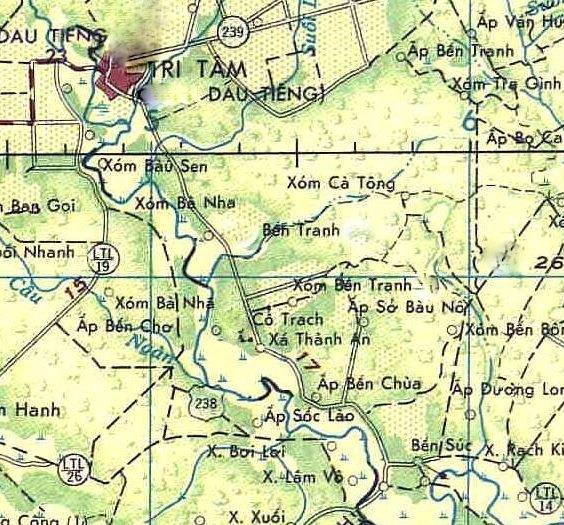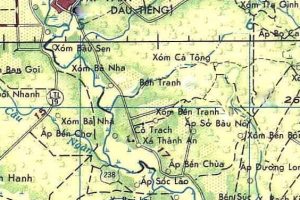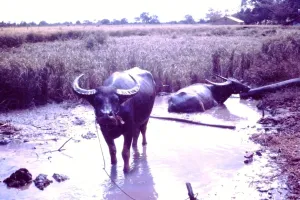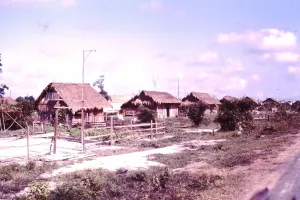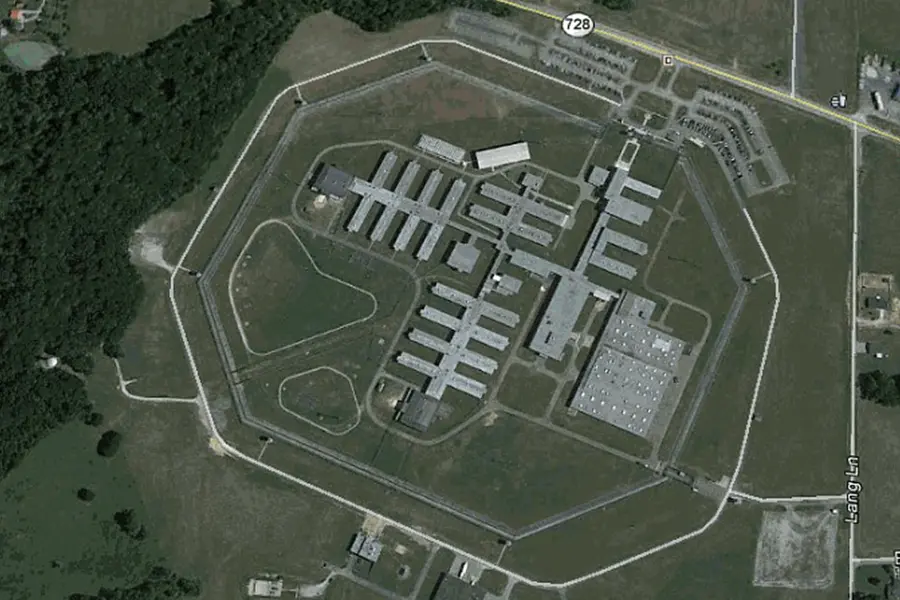There were several villages located in the Black Lions A.O. (area of operations).
They ran from north to south along Route LTL 14. Dau Tieng, Xom Due, Ben Tranh, Co Trach, Ben Chua, and Ben Suc. Our Battalion Intelligence (S-2) considered many of them to be under enemy control, or sympathetic to the NVA/VC.
These villages provided resources such as fighters, food, women/young men (rice bearers) to move supplies to their basecamps. The villagers also provided intelligence of our location and movements (served as trail watchers). In our A.O. Ben Chua was considered the most hardcore village. It seemed liked every time the Black Lions worked the area around Ben Chua there was contact with the enemy.
Beside the concern of the NVA/VC being in the villages as we conducted operations, we had to contend with the village livestock. The water buffalo was used to work the rice paddies and to pull carts. It seemed docile enough around the locals. But my recollection was that whenever American soldiers got anywhere near this large animal, they became extremely aggressive. It must have been our scent that upset them.
So, we decided it was in our best interest to keep our distance. I was told that if an American killed a Water Buffalo our government would pay to replace it. The government would also pay for any rubber trees (owned by Michelin Rubber Company) that were damaged or destroyed during military operations.
The USAID (United States Agency for International Development) processed claims and provided reparations at $500.00 per animal or rubber tree.

